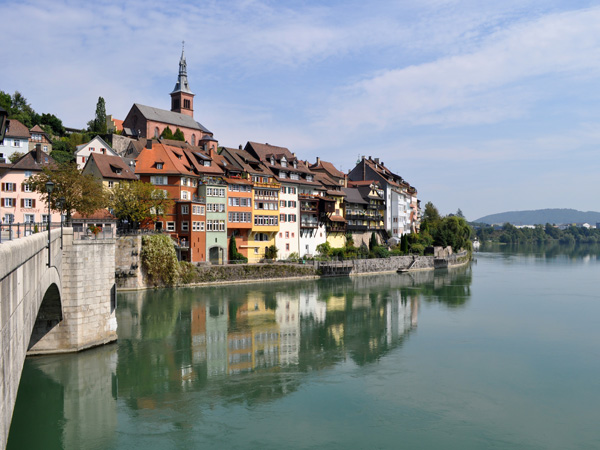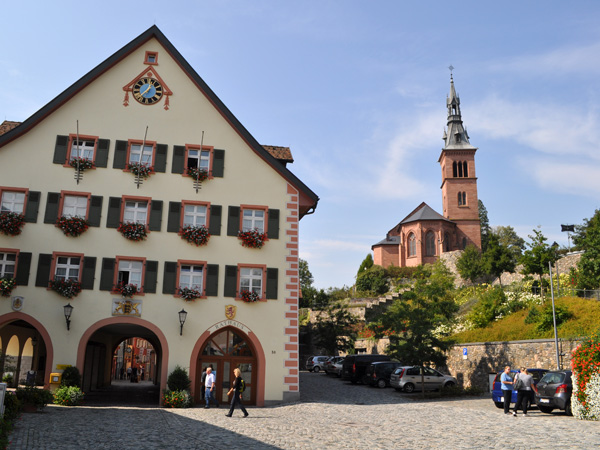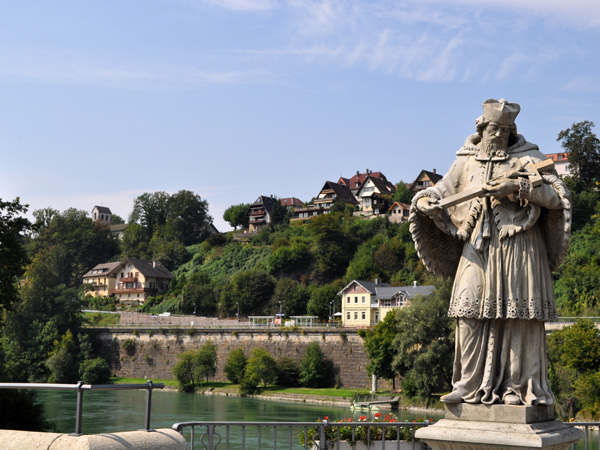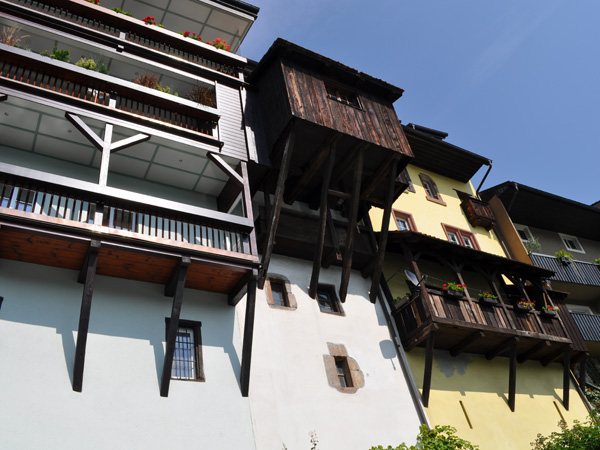Located on the Rhine, about halfway between Basel and Schaffhausen, Laufenburg is a strange little town: the left bank is Swiss, the right bank German, and a pedestrian bridge connects the two sides, without a customs post!
In the past, Laufenburg formed a single city, built around this strategic bridge over the Rhine. After the Treaty of Luneville (1801), which sealed the peace between France and the Holy Roman Empire, the Rhine became the border and the town was cut in two.
A complicated division, which was only finalised in 1829: most of the official buildings (town hall, market, granary...) and 2/3 of the population were on the left bank, while 2/3 of the territory and the commercial buildings were on the right bank.
Nowadays, Laufenburg has kept a very good understanding between the inhabitants of both banks, but administratively there are two different towns, one in the Swiss canton of Aargau, the other in the German state of Baden.
At the end of 2004, a new bridge over the Rhine was opened to the east of the city, made necessary by the fact that the old one faced narrow streets on either side, hardly suitable for two-way traffic. Since then, the old bridge has been closed to vehicular traffic but still connects the two parts of the community and these two typical half towns of the region.
No customs posts, no barriers, no other tangible signs of a border: the Laufenburg Bridge is a perfect example of
entente cordiale between nations. And both parts of the town are well worth a visit!
Useful links
Swiss Canton of
Aargau -
Wikipedia









